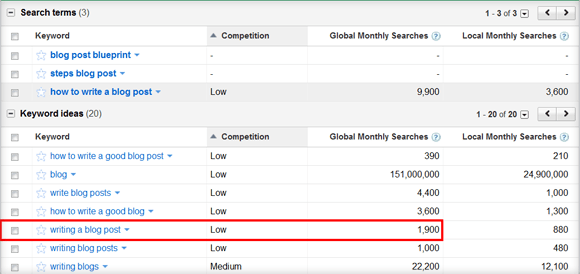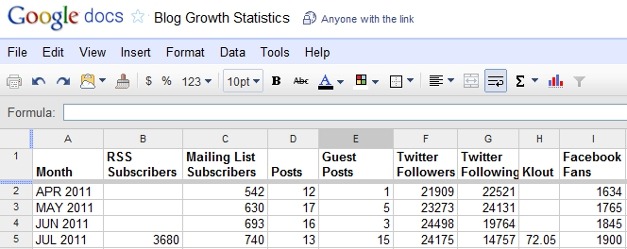33 Common Online Struggles from Last Week’s Experiment
The point of that post was two-fold. One, to interact with you on an
individual level. Two, to better understand how I can help you with your
website right now.
All of your struggles seem to fall into one of six categories:
setting up your website, creating content, getting traffic, converting
traffic, making money, or remaining true to foundations of internet
success.
With that, here are 33 common online struggles and my best advice for handling each.
Setting up Your Website
Most of you seemed to have your sites set up, self-hosted, and
otherwise running properly, which is great. There are still a few common
problems that I saw.
1. Who is this site for and why does it exist?
If the homepage doesn’t answer this question immediately, people are
likely to leave. Communicate this with your logo, tagline, header area,
or featured area.
Michael answers these two questions with his 5-word tagline, “How Pros Make Money Online.”
2. Creating a Custom Blog Design
If you haven’t at least upgraded to a premium theme, I would start
there. Spend $50-$100 and your site will look drastically better.
Michael started Income Diary with a $70 WooThemes template. Within a few
months, he paid someone to update it.
Custom blog designs start at $1,000 and run up to $100,000 or more.
3. Cleaning Up the Blog Design
If you have a logo or an opt-in box, make sure it matches the colors
in the design. If you include post images, make sure they’re all exactly
the same size (here it’s 345 pixels by 180 pixels). If you start adding
widgets to the sidebar/footer, make sure you can answer the question,
“how does this improve the site for my readers?”
Simply using colors that match is a great start. You can find matching color schemes with
ColorSchemeGenerator.com.
4. Blog Excerpts vs. Full Articles
All major news sites and big-time blogs, with the exception of a few,
feature post excerpts on the homepage. They do this to make their
content more consumable and to help people find what they’re looking
for. Plus, it makes the scroll bar smaller.
To enable homepage post excerpts within WordPress, put the Read More tag at the end of your excerpt.

Some premium themes automatically create and show post excerpts on your blog page.
5. Choosing from a Sea of Plugins
Before you start adding every five-star plugin that might improve
your site, you need to understand that plugins are little pieces of
software. Once you install more than 5-10 of them, there’s a good chance
that they’ll conflict with one another, which could crash your site.
The only plugins that are absolutely necessary are
Akismet,
Google XML Sitemaps,
Contact Form 7 (free) or
Gravity Forms (premium), and
WordPress SEO by Yoast (unless your theme has SEO options built-in).
Creating Content
After getting your site set up, the next step is writing content. All of us can improve on this.
6. Writing Well
Writing is like painting. Anyone can pick up a paintbrush and make a
few strokes, but it’s immediately obvious when you can’t do it well.
Simply writing content without spelling or grammar mistakes doesn’t make it good.
If you don’t have a command of the English language, you have three
options: become a better at writing in English, hire a writer, or write
in your native language. Even those of us who speak primarily English
need to work on this, a lot.
7. Creating Exceptional Content
Exceptional content talks about things that people are actually
interested in. It educates and entertains. Most importantly, it uniquely
solves a problem.
If you tell me that your content is exceptional, yet you’re not seeing the results, your content isn’t exceptional.
8. Crafting Headlines
The headline is the most important part of your post. If it’s bad, no one will notice it, click it, or read it.
To write better headlines, make sure they are keyword-focused,
benefit-driven, and power-word ridden. In the eight hours I spent on
your sites, I saw less than a handful of good headlines.
9. Writing Audience-Focused Content
People expect blogs to be flooded with useful information that benefits the audience more than it documents the blogger’s life.
If you want to build an audience, focus on the audience.
10. Finding Motivation to Write Consistently
When you put a lot of work into something and don’t experience
results right away, it’s demoralizing. You question why you’re doing all
of this if no one is paying attention.
Two things. One, you’re definitely doing something wrong and you just
need to figure out how to fix it. Two, this is the internet’s way of
filtering the good from the bad. If it was easy, everyone would do it.
The people who find success online, without exception, dedicate years
to figuring out the internet before they finally crack the formula.
11. Writing with a Busy Schedule
I’ll admit I haven’t found a good solution for this either. The posts
I write here take 6-8 hours. If you have a full-time job, an
attention-hungry kid, and a literally hungry family, I know it’s hard to
find the time to write even once a week.
You have three options. One, write higher quality, less often. Two,
find (probably hire) someone to create content for you. Three, find a
way to accept and filter user-generated content.
12. User-Generated Content
If you can figure out how to accept user-generated content and maintain a high-level of quality, you’re golden.
Again, two things. One, tell your users exactly what you want them to
submit. Two, make the submission process as smooth as possible.
If you use
Gravity Forms, you can create a form that saves their submission as a draft in your “Posts” section of WordPress.
Getting Traffic
Getting traffic was the most common struggle online. Over half of you mentioned that you wanted more traffic.
13. Ranking for the Right Keywords
If you want your site to rank for the right keywords, you need to
create exceptional content for that keyword. Either that, or you’re
going to be paying for traffic.
14. Building Backlinks
I’ve been running blogs since 2008 and I’ve never implemented a
formal link-building campaign. Yet, between my two largest sites, I get
18,500 search visits per month which accounts for 56% of my traffic.
Backlinks are important, but not as important as creating exceptional content. Links come naturally.
I think the larger problem is that people would rather focus on building backlinks than creating exceptional content.
15. Optimizing Blog Posts
None of you mentioned that you struggle with optimizing blog posts,
but I saw that this was an underlying problem to why you’re not getting
traffic.
To help you with that, here are
10 SEO Blog Post Publishing Steps that Most Bloggers Forget and
10 Blog Post Marketing Steps to Take Immediately After You Publish.
16. Encouraging People to Share Your Content
If you’re not creating content worth sharing, people aren’t going to share it.
Again, it all comes back to creating exceptional content. If you’re doing that, they’ll find a way to share it.
17. Boosting Page Views by Keeping People on Your Site
To boost engagement, get people to consume as much of your content as
possible. If I read seven blog posts on any one site, then I’ll
probably become a regular reader.
To increase the likelihood of somebody staying on your site, add a
Related Posts area to your blog post footer. For this, I use the
Similar Posts plugin.
Converting Traffic
Once you get people to your site, focus on encouraging them to do
something. It could be to subscribe, to buy, or even just to comment.
18. Creating an Opt-In Bonus
To create your opt-in bonus, the first step is figuring out what
readers want. If they have a specific set of problems that you can help
them with, write an ebook, create a video series, or set up an
auto-responder.
The software-as-a-service equivalent is a free trial. Very few sites find success without first giving something away for free.
19. Getting More Email Subscribers
The first step in getting more email subscribers is to give them a great reason to subscribe, oftentimes with an opt-in bonus.
Once you have a compelling reason for getting someone to subscribe,
then it’s as simple as constantly reminding them to do so in a way that
communicates the benefit of subscribing.
20. Positioning Your Opt-Ins
The most popular places to put opt-ins are in the header, at the top
of the sidebar, at the bottom of the post, and in the footer. Of course,
Popup Domination works so well because it makes the opt-in
front-and-center.
One location that IncomeDiary.com used to utilize and is beginning to
pick up steam on other sites is above the content and sidebars on the
homepage.
21. Designing Your Opt-Ins
Using the
Aweber/MailChimp-generated
opt-in templates is a good start, but they don’t fit in with the rest
of your design. It looks sloppy and makes people think that your
bonus/newsletter is subpar.
If you know HTML and CSS, you can strip out the auto-generated
styling and style them however you want. Explaining this in more detail
is outside the scope of this article, but if you need help, drop a
comment and I’ll see what I can do.
Building a community is a process that starts with earning one reader
at a time. Get someone to read one post. Then another, and another, and
another. They’ll subscribe, open your emails, leave comments, and share
your stuff.
Then someone else will come along and the two of them will start
recognizing each other in the comments. Then another will come, and
another, and another.
But it starts with one reader reading one post and thinking, “That was worth my time. What else is here?”
Making Money
If you’re doing everything right up to this point, it’s time to cash
in, but in a way that doesn’t detract from the work you’ve already done.
23. Ethics of Making Money Online
It’s not wrong to start forming a business around helping people with their problems. That’s what businesses do.
If you’re not making money nor independently wealthy, then the only
way your blog can be sustainable is if you start selling things to your
audience.
I understand the hesitancy to start making money online because it
feels like you’re exploiting the very people that you’re trying to help.
The best way to overcome this hesitancy is to only sell them things
that they need.
The more niche your audience, the more easily you’ll be able to recommend products and show ads that’ll fit their needs.
24. Making Ads More Relevant
Click-through rates depend on the relevancy of the ads.
If you have a news-based or humor-based site that appeals to
everyone, it’s going to be difficult to serve them relevant ads. If you
focus on building an audience of a specific type of person, you won’t
get as much traffic, but advertisers will pay more for that traffic
because it’s targeted.
25. Positioning Ads to Increase Clicks
I’m not a fan of trying to trick people into clicking your ads. It’s a short-term game that’s not worth playing.
But if your ads are relevant enough to actually help people, then put
them in the same places you would put your opt-ins (header, top
sidebar, bottom post, footer).
26. Focusing on Affiliate Sales
Quick rule: Don’t recommend something that you haven’t used and benefited from using yourself.
Let’s say that you’re building an audience of people like you. If a
product helps you, it’ll help them. If it has an affiliate program, sign
up and recommend it. You can create full-scale reviews or simply drop
it into your posts and emails when it’s relevant.
Recommend a mix of products with and without affiliate programs.
That’ll show people that you’re there to help, not just to make a buck.
27. Coming up with Product Ideas
Ask your audience what they want.
Organize information into an ebook. Develop software that helps you
and package it to help them. Launch a premium course to help them
individually.
The neat thing about building an audience first is that they’ll tell you what they want and you have a platform to sell it.
28. Sales Page Strategy
The rules here are constantly being rewritten.
If you create something that people need and you effectively
communicate the reasons why they need it, they will buy it. If they
don’t buy it, you made a mistake on one of those first two things.
Foundations of Success Online
In terms of building a website, getting traffic, converting traffic,
and making money, success is simply a matter of doing the right things
in the right order. It’s easy once you know how to do it.
The more challenging part is getting the fundamentals right. If you
don’t do these five things, you will struggle at every other level.
29. Help People Solve Problems
If your website doesn’t help specific people solve specific problems,
it’s not going to get the attention that it deserves. And even if it
does, it’s going to be difficult to sell things to those people.
30. Be Unique in a Crowded Internet
Most sites are average.
If you want to stick out, be different. If you want to be remarkable,
be memorable. If you want to make waves, create something that you’re
proud to show to your real-life friends.
Too many of us have template-y designs, generic logos, auto-generated opt-ins, and regurgitated content.
Be unique.
31. Get Past the Desire for Anonymity
I know that many of you choose to be anonymous because the internet
makes that possible. Maybe it lets you be more honest with your advice.
Or maybe you justify it with, “this site isn’t about me.”
But it’s like walking into a sales meeting with a mask on. Sure,
it’ll be interesting for a few minutes, but if you never take the mask
off, they’re going to walk out.
People buy from people they know, like, and trust.
32. Avoid Paralysis from the Pursuit for Perfection
One month on the design, two on the logo, a few months of market
research, and many, many months crafting an amazing opt-in bonus. Now,
just a few weeks to write the first five blog posts and bam! Site’s
live.
Nobody comes.
I know, the gradient in the nav menu is all wrong. Just a few weeks
to fix that. Might as well re-work the footer too. Another month goes
by.
Nobody comes.
Maybe something’s wrong with my color scheme…
A year later. You cracked the 1,000 uniques mark in the 11
th month, but your site never picked up steam like you planned for it to.
Just get your site up, track data, and adjust your site based on feedback. Then, never stop improving.
33. Stick with One Project
Results are going to take longer than you expect, especially if you’re just getting started online.
If you move around from shiny object to shiny object every three
months, none of your projects are going to get the attention that they
need.
Like I said, if you have the fundamentals right, it’s only a matter
of doing the other 28 things in this list. It’ll take time, more time
than you want it to, but it will happen.
The Last Word
I learned a lot about you all last week. What you struggle with. What
you’re doing well. What you can improve. And I hope this post shed some
light on your common struggles.
For us to continue serving you, we need you to continue telling us how we can help.
I appreciate the, “Awesome post, Nick! Way to go. You’re so smart (and handsome)” comments. I really do.
But I’d like more of you to challenge my thoughts. Give me feedback
that’s scary to give. Tell me, “Nick, this concept is good in theory,
but I’m really struggling to implement it because…”










